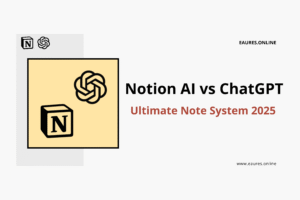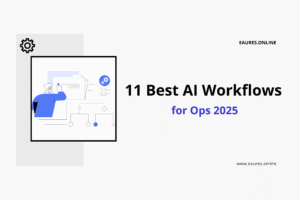50 High‑Impact AI Prompts for Product Managers (Copy‑Paste Pack)
Table of Contents
Why AI Prompts for Product Managers Work
AI shines when you give it a well‑scoped problem, quality context, and a clear output format. For product leaders, that translates into faster synthesis of research, cleaner articulation of strategy, and tighter communication across engineering, design, and go‑to‑market. Used thoughtfully, AI prompts for product managers help you:
- Move from raw inputs (interview notes, analytics, market scans) to actionable insights.
- Explore multiple strategic options quickly, then converge on those worth testing.
- Produce repeatable artifacts—PRDs, user stories, OKRs, release notes—that meet a consistent bar.
For foundational guidance on UX research rigor, see Nielsen Norman Group’s overview of methods and when to use them. It pairs well with the prompts in this pack when you’re synthesizing qualitative data.
External resource: Nielsen Norman Group: UX Research Cheat Sheet
How to Get the Best Results from AI Prompts for Product Managers
A Simple Prompting Framework for PMs (R.O.A.D.S.)
Use this five‑part structure to maximize output quality:
- Role – Tell the AI who to be (e.g., “You are a senior product manager for a B2B SaaS platform”).
- Objective – State the goal (“Generate alternative problem statements…”).
- Artifacts – Link or paste the relevant inputs (notes, metrics, constraints).
- Directives – Specify format, style, and depth (“Return a 1‑page brief with bullets and a risk section”).
- Safeguards – Add criteria or limits (“Cite assumptions, flag data gaps, avoid confident guesses”).
Best Practices
- Feed real context. Paste snippets, user quotes, event data, and constraints.
- Ask for structure. Tables, checklists, and numbered lists make outputs reusable.
- Demand alternatives. Request 3–5 variants to compare trade‑offs.
- Keep humans in the loop. Treat outputs as first drafts—validate with users and stakeholders.
- Align to goals. Tie every suggestion to OKRs and your north star metric. For a refresher, review Google’s OKR guide.
External resource: re:Work by Google – Set Goals with OKRs
50 High‑Impact AI Prompts for Product Managers (Copy‑Paste Pack)
Below are ten categories, each with five high‑leverage prompts. Replace placeholders in {curly braces} with your details. For ease of use, each set follows the R.O.A.D.S. structure.
1) Product Vision & Strategy — AI Prompts for Product Managers
Copy‑Paste Prompts
- Vision Options
Role: You are a seasoned Head of Product. Objective: Propose 3 crisp product vision statements for {product} serving {audience} within {market}. Artifacts: Current mission: "{mission}". Strategic constraints: {constraints}. Directives: Each vision ≤ 25 words, distinct strategic posture (platform, workflow, or data advantage). Include 2 risks per option. Safeguards: Highlight assumptions and unknowns. - North Star Metric Definition
Role: Product strategist. Objective: Recommend a north star metric for {product}. Artifacts: Business model: {model}. Lifecycle: {stage}. Key outcomes: {outcomes}. Directives: Provide metric definition, formula, leading indicators, anti-metrics (what to avoid optimizing), and 3 example dashboards. Safeguards: Note data quality gaps. - Strategy One‑Pager
Role: Strategy consultant for SaaS. Objective: Draft a 1-page strategy for {product}. Artifacts: Competitive context: {context}. Differentiators: {diffs}. Target segments: {segments}. Directives: Use sections: Problem, Insight, Strategy Choice, Where to Play, How to Win, Metrics, Risks. Safeguards: List top 5 assumptions to validate. - Portfolio Bets Map
Role: Portfolio PM. Objective: Classify current and proposed initiatives for {org} on a 2x2: impact vs. uncertainty. Artifacts: Initiatives: {list}. Resources: {capacity}. Directives: Return a table with quadrant, rationale, time horizon, and kill/scale/hold recommendation. Safeguards: Call out dependencies. - Narrative Vision (Press Release)
Role: Product storyteller. Objective: Write a future-dated press release for {product} launching {feature} on {date}. Artifacts: Customer problem: {problem}. Value: {value}. Quotes: {quotes or placeholders}. Directives: 350–500 words, customer-first tone, measurable claims, FAQ with 5 questions. Safeguards: Avoid unverifiable claims.

2) Market & Competitive Analysis — AI Prompts for Product Managers
Copy‑Paste Prompts
- Competitor Matrix
Role: Competitive analyst. Objective: Build a competitor matrix for {category}. Artifacts: Competitors: {list}. Differentiators: {differentiators}. ICP: {icp}. Directives: Output a table with ICP fit, key features, pricing signal, moat, and likely countermoves. Safeguards: Note areas with speculative data. - Category Narrative
Role: Category designer. Objective: Summarize the evolution of the {category} market and what's changing. Artifacts: Trends: {trends}. Regulations/standards: {regs}. Directives: 5-paragraph narrative + 3 contrarian hypotheses we should test. Safeguards: Cite assumptions. - Win/Loss Insights
Role: Product marketer. Objective: Synthesize win/loss driver patterns from these notes: {notes}. Directives: Output: top 5 win drivers, top 5 loss drivers, sales enablement gaps, product gaps, pricing signals. Safeguards: Flag where sample size may bias conclusions. - SWOT to Actions
Role: Strategy coach. Objective: Convert this SWOT {swot} into 7 concrete actions ranked by expected impact. Directives: Provide owner, timeframe, leading metric, and risk for each action. - Segment Prioritization
Role: Market strategist. Objective: Prioritize segments for {product}. Artifacts: Segments: {segments}. Constraints: {constraints}. Directives: Score with TAM, pain intensity, willingness to pay, access, and ecosystem leverage. Return top 3 with messaging angles.
3) Customer Discovery & Jobs‑to‑Be‑Done — AI Prompts for Product Managers
Use these prompts alongside rigorous research practice.
External resource: NN/g on Research Methods
Copy‑Paste Prompts
- Interview Guide (JTBD)
Role: Qual researcher. Objective: Draft a 45-minute interview guide to uncover JTBD for {audience} around {job}. Directives: Include warm-ups, context questions, switching triggers, anxieties, desired outcomes, and closing. - Theme Synthesis
Role: Research synthesizer. Objective: Cluster these notes {raw_notes} into themes. Directives: Return a table: theme, representative quotes, frequency, severity of pain, opportunity size estimate. Safeguards: Indicate sample size and biases. - Problem Statement Refinement
Role: PM coach. Objective: Rewrite our problem statement so it is customer-centric and testable. Artifacts: Current statement: "{statement}". Directives: Provide 3 versions with scope, who, when, and measurable “done” criteria. - Persona Lite
Role: Product strategist. Objective: Draft a practical, data-light persona for {audience}. Directives: Include top tasks, constraints, buying triggers, objections, preferred channels, and key accessibility considerations. - Opportunity Solution Tree Seeds
Role: Discovery partner. Objective: Translate these outcomes {outcomes} into opportunities and solution ideas. Directives: Return an Opportunity > Solution > Experiment list. Prioritize by impact and uncertainty.
4) Roadmapping & Prioritization — AI Prompts for Product Managers
For structured prioritization frameworks, review RICE methodology background from Intercom.
External resource: Intercom – RICE Prioritization
Copy‑Paste Prompts
- Quarterly Outcome Roadmap
Role: Product operations lead. Objective: Turn these outcomes {okr_outcomes} into a 3-month roadmap. Directives: Provide monthly milestones, owners, dependencies, and risk burndown plan. - RICE Scoring Table
Role: Portfolio PM. Objective: Score initiatives with RICE. Artifacts: Backlog: {list}. Directives: Output a table with Reach, Impact, Confidence, Effort, RICE score, tie-breakers, and quick wins. - Now‑Next‑Later
Role: PM for {product}. Objective: Create a Now/Next/Later plan from these initiatives: {initiatives}. Directives: Include rationale, expected outcome, and validation plan per item. - Risk Register
Role: Delivery manager. Objective: Build a risk register for the {program}. Directives: For each risk: likelihood, impact, owner, mitigation, trigger, and contingency. - Resource Trade‑offs Memo
Role: Strategy analyst. Objective: Draft a memo assessing resource trade-offs between {optionA} and {optionB}. Directives: Include cost-of-delay, strategic fit, reversible vs. irreversible, and recommendation.
5) Metrics, Analytics & Experimentation — AI Prompts for Product Managers
For deeper context on north star thinking, review Amplitude’s perspective.
External resource: Amplitude – North Star Metric
Copy‑Paste Prompts
- Metric Tree
Role: Analytics lead. Objective: Build a metric tree connecting {north_star} to leading indicators and input metrics. Directives: Return hierarchical list + advice on instrumentation gaps. - Cohort Insights
Role: Data analyst. Objective: Analyze churn by cohort from these numbers {data}. Directives: Summarize patterns, suspected drivers, and 3 experiments to test causality. Safeguards: State confidence level and assumptions. - Experiment Brief (A/B)
Role: Experimentation coach. Objective: Create an A/B test brief for {hypothesis}. Directives: Include metric definition, MDE estimate, sample size ballpark, guardrail metrics, and a pre-registered analysis plan. - Instrumentation Plan
Role: Analytics engineer. Objective: Propose an event tracking plan for {feature}. Directives: List events, properties, funnels, naming conventions, and PII considerations. Safeguards: Flag privacy risks and data retention needs. - Insight to Action
Role: Product analyst. Objective: Turn these findings {findings} into prioritized actions. Directives: Provide action, owner, expected lift, and monitoring plan.
6) Design & UX Collaboration — AI Prompts for Product Managers
Copy‑Paste Prompts
- Problem‑First Brief
Role: PM partnering with Design. Objective: Draft a design brief focused on problem framing for {feature}. Directives: Include user context, constraints, non-goals, success criteria, and accessibility needs (WCAG considerations). - User Flow Alternatives
Role: UX strategist. Objective: Propose 3 user flow options for {task}. Directives: Present as step-by-step lists with friction points and opportunities to reduce cognitive load. - Empty State Copy
Role: UX writer. Objective: Write empty-state copy for {screen} that educates and nudges first actions. Directives: Provide 3 variants with microcopy and a single primary CTA. - Heuristic Review
Role: UX reviewer. Objective: Evaluate {screen/workflow} using usability heuristics. Directives: Return a table: issue, violated heuristic, severity, suggested fix. - Design QA Checklist
Role: PM in design QA. Objective: Create a QA checklist for {feature}. Directives: Cover states, error handling, responsiveness, keyboard navigation, and localization placeholders.

7) Go‑to‑Market & Positioning — AI Prompts for Product Managers
Copy‑Paste Prompts
- Positioning Statement
Role: PMM partner. Objective: Produce a positioning statement for {product} targeting {segment}. Directives: Use: For {segment} who {need}, {product} is a {category} that {benefit}, unlike {alternative}, it {differentiation}. - Pricing Hypotheses
Role: Monetization PM. Objective: Generate pricing hypotheses for {product} given {value_drivers} and {constraints}. Directives: Provide 3 models (tiered, usage-based, hybrid) with pros/cons and key experiments. - Launch Plan
Role: Launch lead. Objective: Draft a GTM plan for launching {feature} on {date}. Directives: Include milestones, channels, enablement assets, risk matrix, and success metrics. - Sales Enablement Brief
Role: PM for enterprise. Objective: Create a 1-pager for sales on {feature}. Directives: Pain, promise, proof, pricing signal, objection handling, and compliance notes. - Release Notes (Human‑Friendly)
Role: Product communicator. Objective: Write release notes for {version}. Directives: 150–250 words, “what changed, why it matters, how to try it,” with bullet list of fixes and known issues.
8) Stakeholder Alignment & Communication — AI Prompts for Product Managers
Copy‑Paste Prompts
- Executive Update
Role: PM reporting to execs. Objective: Write a weekly update for {initiative}. Directives: Use RAG (red/amber/green) status, blockers, decisions needed, and next steps. Brevity over detail. - Decision Memo
Role: Facilitator. Objective: Structure a decision memo on {decision}. Directives: Context, options, criteria, decision, risks, and reversal plan. Max 600 words. - Meeting Agenda
Role: PM host. Objective: Create a focused agenda for {meeting}. Directives: Objectives, inputs to read, timeboxes, roles (D/R/A), and definition of done. - Stakeholder Map
Role: Change manager. Objective: Map stakeholders for {program}. Directives: Table with influence, interest, concerns, preferred channels, and tailored messages. - Risky Assumptions Review
Role: Product coach. Objective: Identify risky assumptions for {idea}. Directives: List top 10 with test type (interview, fake door, concierge), expected evidence threshold, and timeline.
9) Execution, Delivery & Engineering Partnership — AI Prompts for Product Managers
Copy‑Paste Prompts
- PRD Skeleton
Role: Senior PM. Objective: Draft a concise PRD for {feature}. Directives: Problem, outcome, scope in/out, user stories, acceptance criteria, non-functional requirements, rollout plan, and metrics. - User Stories (INVEST)
Role: Agile PM. Objective: Convert this capability {capability} into user stories. Directives: Use INVEST, include acceptance criteria and test ideas per story. - Dependency Mapping
Role: Delivery planner. Objective: Map dependencies for {epic}. Directives: Table: dependency, owner team, sequencing, blocker risk, mitigation. - Rollout & Guardrails
Role: SRE-conscious PM. Objective: Propose a staged rollout plan for {feature}. Directives: Phases, % exposure, kill-switch conditions, monitoring alerts, rollback plan. - Post‑Mortem Template
Role: Incident reviewer. Objective: Create a blameless post-mortem template for {incident}. Directives: Timeline, contributing factors, detection gaps, remediation, and follow-up owners.
10) Post‑Launch, Growth & Retention — AI Prompts for Product Managers
Copy‑Paste Prompts
- Activation Audit
Role: Growth PM. Objective: Audit activation flow for {product}. Directives: Identify friction points, propose 5 experiments, estimate impact with simple model. - Lifecycle Messaging Map
Role: Lifecycle strategist. Objective: Design lifecycle messaging for {audience} from signup to expansion. Directives: Stages, triggers, message purpose, primary CTA, and success metric. - Churn Diagnosis
Role: Retention analyst. Objective: Diagnose churn for {segment}. Artifacts: Notes/data: {inputs}. Directives: Provide churn typology (avoidable vs. structural), top 5 interventions, and leading signal checks. - Growth Model Sketch
Role: Quant-minded PM. Objective: Sketch a simple growth model for {product}. Directives: Define acquisition, activation, retention, and monetization levers. Provide equations with example numbers. - Customer Advisory Board Agenda
Role: PM facilitator. Objective: Draft a 90-minute CAB session to de-risk roadmap choices. Directives: Objectives, session plan, artifacts to share, decisions we seek, and follow-up actions.

Guardrails & Responsible Use of AI Prompts for Product Managers
AI is a power tool—not an authority. Keep these guardrails in place:
- Stay privacy‑safe. Strip PII from datasets and transcripts when pasting into an assistant.
- Validate with users. Treat AI‑generated insights as hypotheses until they meet your evidence bar.
- Respect accessibility and inclusivity. Ensure outputs consider diverse users and contexts.
- Be transparent. Make it clear to stakeholders when drafts originated from AI and where human judgment finalized them.
For broader ethical principles that map well to product work, review Google’s AI principles.
External resource: Google – AI Principles
How to Operationalize These AI Prompts for Product Managers
Create a Lightweight Prompt Library
- Centralize prompts in your team wiki. Group them by lifecycle stage (Discovery, Planning, Delivery, Growth).
- Attach examples. Save real inputs/outputs so teammates learn how to adapt them.
- Add tags such as “B2B”, “Mobile”, “Regulated”, “Pricing”, “Onboarding.”
Fold Prompts Into Your Rituals
- Weekly research synthesis: Run prompts 12 and 25 to transform notes into prioritized actions.
- Quarterly planning: Use prompts 16–20 to convert OKRs into a defensible roadmap.
- Launch reviews: Combine prompts 33–35 and 44–45 to tighten readiness and resilience.
- Growth sprints: Start with prompts 21, 22, and 46–49 to align on metrics and experiments.
Measure the Impact
- Track cycle time from insight to shipped change.
- Monitor quality signals (fewer rework loops, clearer PRDs, tighter acceptance criteria).
- Watch outcomes (activation lift, time‑to‑value, churn reduction).
- Capture team sentiment—are design, engineering, and GTM partners spending more time on deep work and less on administrative friction?

FAQs: AI Prompts for Product Managers
What’s the best way to customize these AI prompts for product managers?
Start by tightening the Artifacts section. Paste real user quotes, actual numbers, and precise constraints. Then refine Directives to match your team’s templates (e.g., specific PRD sections, your preferred user‑story style, or your A/B testing guardrails).
Will AI prompts for product managers replace discovery or strategy work?
No. They accelerate thinking and articulation but do not replace evidence gathering, judgment, or trade‑off calls. Use them to widen the option space and produce better first drafts, then validate and decide with your team and users.
Which tools work best with these prompts?
Any capable AI assistant that handles longer context windows. The key is disciplined inputs and consistent output formats—not a specific vendor.
How do I avoid hallucinations or false certainty?
Add Safeguards in every prompt: “state assumptions,” “flag low‑confidence claims,” “note missing data.” Treat outputs as hypotheses and verify with analytics, experiments, or user research.
How often should I revisit my prompt library?
Quarterly. Archive low‑value prompts, promote high performers, and create variants for new stages (e.g., platform extensibility, compliance features, AI‑powered capabilities).
Final Takeaway
You don’t need more meetings to get clarity—you need better, faster drafts. This pack of AI prompts for product managers gives you practical scaffolding for vision, discovery, prioritization, delivery, and growth. Copy, paste, customize, and integrate them into your rituals. Let AI make the busywork lighter so you can focus on the conversations and decisions that truly move the product.




